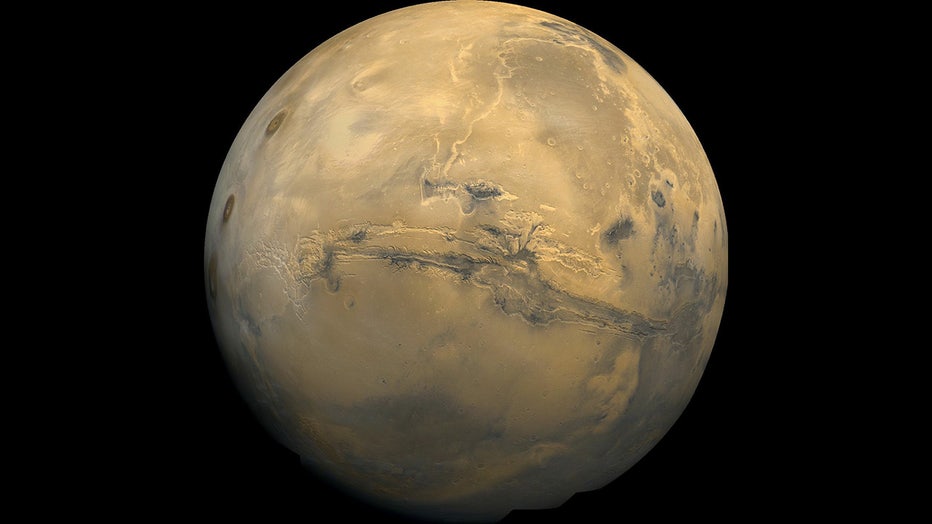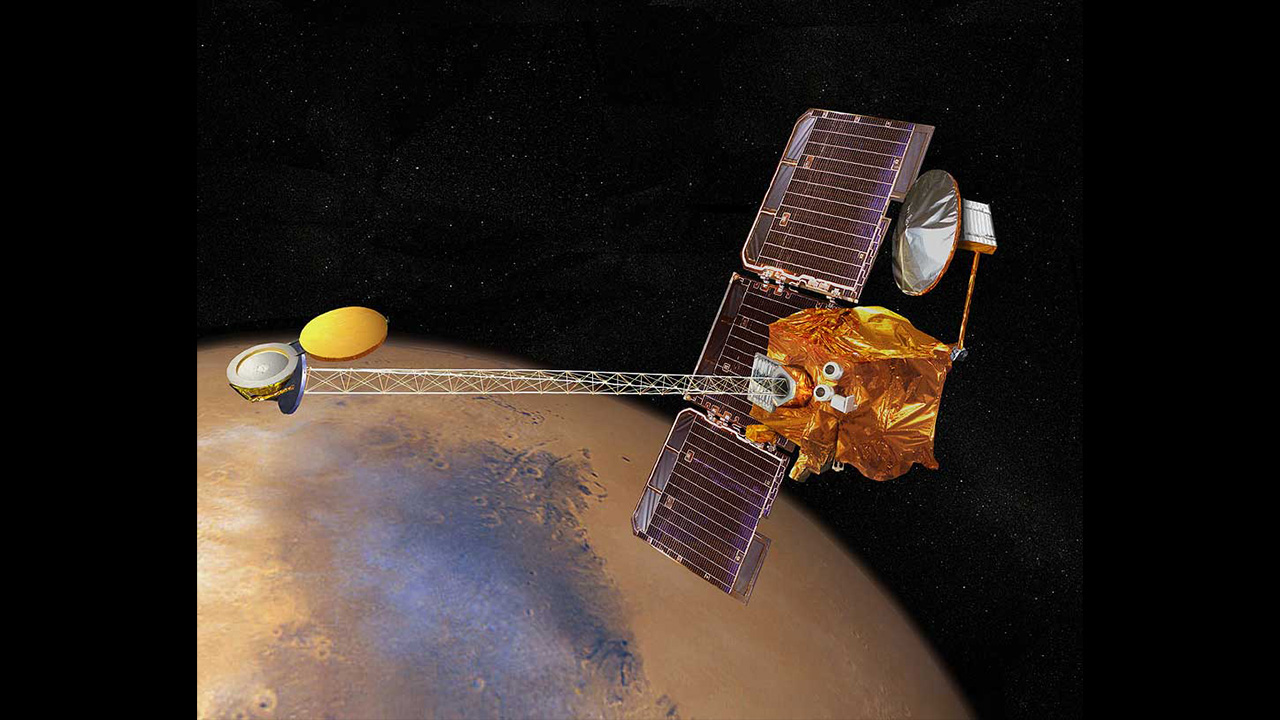Ancient Mars may have been teeming with underground microbes, study suggests
CAPE CANAVERAL, Fla. - Ancient Mars may have had an environment capable of harboring an underground world teeming with microscopic organisms, French scientists reported Monday.
But if they existed, these simple life forms would have altered the atmosphere so profoundly that they triggered a Martian Ice Age and snuffed themselves out, the researchers concluded.
The findings provide a bleak view of the ways of the cosmos. Life — even simple life like microbes — "might actually commonly cause its own demise," said the study's lead author, Boris Sauterey, now a post-doctoral researcher at Sorbonne University.
The results "are a bit gloomy, but I think they are also very stimulating.," he said in an email. "They challenge us to rethink the way a biosphere and its planet interact."

FILE - The largest canyon in the Solar System cuts a wide swath across the face of Mars. (NASA)
In a study in the journal Nature Astronomy, Sauterey and his team said they used climate and terrain models to evaluate the habitability of the Martian crust some 4 billion years ago when the red planet was thought to be flush with water and much more hospitable than today.
They surmised that hydrogen-gobbling, methane-producing microbes might have flourished just beneath the surface back then, with several inches (a few tens of centimeters) of dirt, more than enough to protect them against harsh incoming radiation. Anywhere free of ice on Mars could have been swarming with these organisms, according to Sauterey, just as they did on early Earth.
RELATED: NASA's Mars Perseverance rover finds diversity, hints of microbial life in ancient lake bed rocks
Early Mars’ presumably moist, warm climate, however, would have been jeopardized by so much hydrogen sucked out of the thin, carbon dioxide-rich atmosphere, Sauterey said. As temperatures plunged by nearly minus-400 degrees Fahrenheit (minus-200 degrees Celsius), any organisms at or near the surface likely would have buried deeper in an attempt to survive.
By contrast, microbes on Earth may have helped maintain temperate conditions, given the nitrogen-dominated atmosphere, the researchers said.
The SETI Institute’s Kaveh Pahlevan said future models of Mars’ climate need to consider the French research.
Pahlevan led a separate recent study suggesting Mars was born wet with warm oceans lasting millions of years. The atmosphere would have been dense and mostly hydrogen back then, serving as a heat-trapping greenhouse gas that eventually was transported to higher altitudes and lost to space, his team concluded.
The French study investigated the climate effects of possible microbes when Mars' atmosphere was dominated by carbon dioxide and so is not applicable to the earlier times, Pahlevan said.
"What their study makes clear, however, is that if (this) life were present on Mars" during this earlier period, "they would have had a major influence on the prevailing climate," he added in an email.
The best places to look for traces of this past life? The French researchers suggest the unexplored Hellas Planita, or plain, and Jezero Crater on the northwestern edge of Isidis Planita, where NASA’s Perseverance rover currently is collecting rocks for return to Earth in a decade.
Next on Sauterey’s to-do list: looking into the possibility that microbial life could still exist deep within Mars.
"Could Mars still be inhabited today by micro-organisms descending from this primitive biosphere? he said. "If so, where?"
___
The Associated Press Health and Science Department receives support from the Howard Hughes Medical Institute’s Department of Science Education. The AP is solely responsible for all content.


